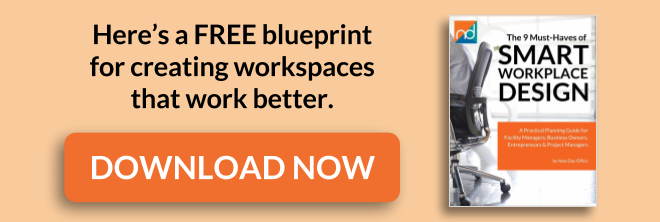How to Design Your Office Based on Work Styles
By Matt Brady

Office spaces should be designed for the working styles of employees rather than the year they were born.
For years, managers have been hounded by the notion that every person likes to work a certain way based on their generation. Baby Boomers like to sit behind a desk while Millennials prefer having options for standing or sitting depending on their mood.
Is this how everyone likes to work though?
We don’t think so.
Every employee is different. Some like to move around quickly with a lot of energy and others are happy to sit alone all day. In fact, studies have shown that the productivity of employees is directly related to the employee’s well-being. Employees who feel comfortable in their space, and actually like the physical aspects of their workspace, will be more productive at work.
There are four main working styles that have been discovered based on the Business Chemistry system. In theory, you should be able to categorize each of your employees into one of these groups based on what motivates them as an employee.
Each working style needs a different kind of workplace design that supports its strengths while respecting its weaknesses.
Here are the four main working styles to consider when making decisions about office design:

Pioneers | The Go-Getters
35-40% Of Your Workforce
This group will likely be the largest in your workforce unless your company has more than 100,000 employees.
Pioneers are employees who are highly energized and have a vast amount of imagination. They’re always looking for the next opportunity and how it can help grow the company. They’re okay with making split-second decisions.
Pioneers will need a workspace that allows them easy access to their computers as well as ways to communicate with others. Pioneers are driven to perform so they will do better with simple and modern workplace design that allows them the freedom to move around and make decisions. Height adjustable desks and chairs are a great option for Pioneers as well as open and semi-private workspaces.
Pioneers prefer to work in open spaces that allow for more creativity.

Drivers | The Fighters
25-35% Of Your Workforce
The second largest group in your company will be the Drivers, who enjoy a challenge and rise to the occasion whenever there is a big deadline looming or a large project to complete. They help generate momentum and are willing to fight for the company when the time comes.
Drivers appreciate more of a traditional approach to office furniture in terms of desks and chairs. They may be more open to a casual atmosphere so that they can work as a team to reach a common goal.
Allowing a group of Drivers to have their own workspace in a larger room can enhance their workspace personality.

Guardians | The Level-Headed
12-22% Of Your Workforce
Guardians love stability and order. These employees are level-headed in their decisions and are the most predictable in how they will react to a certain situation. They prefer working alone for most of their day and are often quiet in a large group.
Guardians will most likely be more introverted and appreciate some sense of privacy in their workspace. They do better in spaces where they always know where everything is and have enough room for storage.
Guardians require some privacy and personal space, so consider adding partial walls and dividers.

Integrators | The Peacemakers
15-19% Of Your Workforce
This group of employees enjoys being with other people. Integrators are good at bringing teams together and crave the community connection that a healthy office can bring. Integrators are the social butterflies of the office.
Integrators gain energy from chatting with other employees and are great at relating to people on a personal level. Integrators appreciate open, comfortable seating where relationships can be built over a cup of coffee.
Building a collaborative space for Integrators is also important as they want to be able to work as a team.

When it comes to design, understanding work styles can be a game-changer
Some of your employees will easily fit into one of these boxes while others can be a blend of two different types.
The most common blends include Pioneer-Drivers and Guardian-Integrators. For employees who identify as a mixture of two types, consider allowing them the option to pick their workspace based on which category they identify with most.
A large part of office design is considering the amount of work that your company normally does. If your workers don’t need a lot of collaboration then it’s possible that private offices are the right fit. Other companies that thrive on group work need to allow enough space for everyone to come together.
Don’t assume that “one design fits all” for your company. It has to resonate with your employees.
Plenty of companies followed the open office trend without getting buy-in. A recent study showed that many employees prefer some sort of division in their workspace rather than open offices.
Workplace design can be complicated given the different kinds of employees that you have. However, considering the working styles of your employees can be a game changer when it comes to productivity and employee well-being.
Employees who feel comfortable in their workspace will be able to focus on the task at hand and benefit the company.
Giving employees the freedom to work in a space that focuses on their strengths, instead of magnifying their weaknesses, helps everyone in the office work better together toward the overall company mission.

